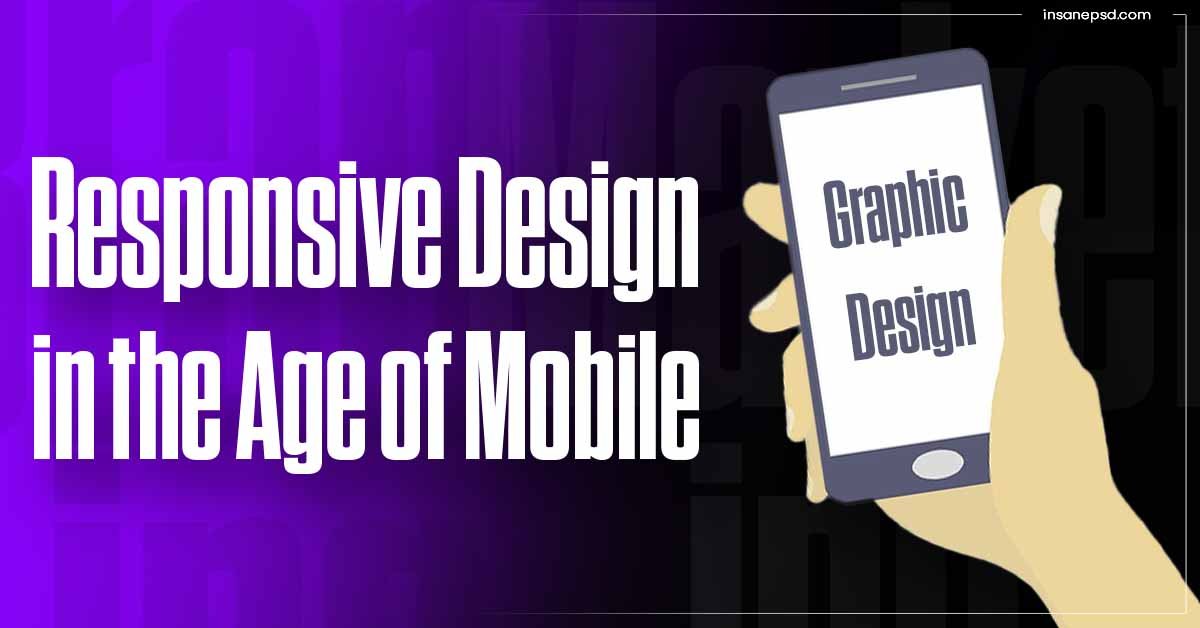Introduction
In the fast-paced digital landscape, the prevalence of mobile devices has fundamentally transformed the way we access and interact with content. As smartphones and tablets become ubiquitous, the need for responsive design has never been more critical from a graphic designer’s perspective.
Definition of Responsive Design
Responsive design refers to the approach of crafting web pages that provide an optimal viewing and interaction experience across a wide range of devices, from desktop monitors to mobile phones. It ensures that the content adapts seamlessly to different screen sizes and resolutions.
Importance in the Mobile Age
With the majority of internet users accessing content on mobile devices, responsive design is not merely a trend but a necessity. Graphic designers play a pivotal role in creating visually appealing and functional interfaces that cater to the diverse landscape of mobile screens.
Evolution of Mobile Devices
Rise of Smartphones and Tablets
The exponential growth of smartphones and tablets has revolutionized how individuals consume information. Graphic designers must now grapple with the challenge of designing for a variety of screen sizes and orientations.
Impact on Graphic Design
This shift in user behavior has significant implications for graphic design. Designers must consider the limitations and possibilities of mobile devices, ensuring that their creations maintain clarity and impact across various platforms.
Core Principles of Responsive Design
Fluid Grids
One of the fundamental principles of responsive design is the use of fluid grids. Designers create layouts that can adapt proportionally to the screen size, providing a consistent and visually pleasing experience.
Flexible Images
Graphic designers also employ flexible images that can scale and resize based on the user’s device. This ensures that images remain clear and impactful regardless of the screen dimensions.
Media Queries
Media queries are essential tools for responsive design, allowing designers to apply different styles based on characteristics such as screen width, height, and resolution. This dynamic approach enables a tailored experience for users on various devices.
Graphic Designer’s Role in Responsive Design
Adapting Visual Elements
Graphic designers must skillfully adapt visual elements to maintain the integrity of their designs across diverse screens. This involves adjusting typography, images, and other graphic components for optimal presentation.
Consistency Across Devices
Achieving consistency across devices is a key challenge. Graphic designers employ a combination of creative skills and technical knowledge to ensure that the brand’s visual identity remains cohesive, regardless of the user’s chosen device.
Challenges Faced by Graphic Designers
Balancing Aesthetics and Functionality
One of the primary challenges faced by graphic designers in the realm of responsive design is striking a balance between aesthetics and functionality. Designs must be visually appealing while also delivering a seamless user experience.
Optimizing for Different Screen Sizes
The sheer variety of screen sizes poses a constant challenge. Graphic designers must anticipate and address issues related to both small screens on smartphones and larger screens on tablets, ensuring a harmonious design across the spectrum.
Tools and Technologies for Responsive Design
Design Software
Leading design software provides features that facilitate responsive design, allowing designers to create layouts that automatically adjust to different screen sizes.
Prototyping Tools
Prototyping tools assist graphic designers in testing and refining their designs across multiple devices before the final implementation, streamlining the development process.
Collaboration Platforms
Collaboration platforms enhance communication among design teams, ensuring a cohesive approach to responsive design. These platforms enable designers to work seamlessly, despite geographical distances.
Importance of User Experience (UX)
Navigating Responsiveness
Responsive design directly impacts user experience. Graphic designers play a crucial role in ensuring that users can navigate and interact with content effortlessly, irrespective of the device they are using.
Enhancing User Engagement
An engaging user experience is essential for retaining audience interest. Graphic designers focus on creating visually stimulating designs that enhance user engagement and encourage prolonged interaction with the content.
Best Practices for Responsive Graphic Design
Prioritizing Content
Graphic designers prioritize content hierarchy to ensure that the most important information is presented prominently, even on smaller screens.
Mobile-First Approach
A mobile-first approach involves designing for mobile devices initially and then progressively enhancing the experience for larger screens. This strategy aligns with the prevalent mobile usage trend.
Continuous Testing and Improvement
The iterative nature of responsive design requires continuous testing and improvement. Graphic designers employ user feedback and analytics to refine and optimize designs over time.
Case Studies
Successful Implementations
Examining successful implementations of responsive design provides valuable insights into effective strategies and best practices adopted by graphic designers.
Lessons Learned
Analyzing lessons learned from less successful implementations allows graphic designers to avoid common pitfalls and refine their approach for future projects.
Future Trends in Responsive Graphic Design
Emerging Technologies
As technology evolves, graphic designers must stay abreast of emerging technologies, such as augmented reality and foldable screens, and consider their impact on responsive design.
Evolving Design Standards
Design standards are dynamic, and graphic designers should anticipate shifts in user expectations and preferences, adapting their approach to align with evolving design standards.
Conclusion
In the dynamic landscape of graphic design, responsiveness is not just a feature but a necessity. Graphic designers, armed with creativity and technical acumen, navigate the challenges of the mobile age, ensuring that visual elements captivate audiences across diverse devices.
Frequently Asked Questions (FAQs)
- Is responsive design only for websites? Responsive design is commonly associated with websites, but its principles are applicable to various digital interfaces, including mobile applications and email templates.
- How can graphic designers balance aesthetics on different screen sizes? Balancing aesthetics involves careful consideration of design elements, prioritizing key visuals, and leveraging the flexibility of responsive design tools.
- What role do media queries play in responsive design? Media queries enable designers to apply specific styles based on device characteristics, allowing for a customized user experience.
- Is a mobile-first approach essential for all graphic design projects? While not mandatory, a mobile-first approach aligns with the prevalent trend of mobile device usage and ensures a user-centric design process.
- **What emerging technologies should graphic designers be aware of in responsive design
